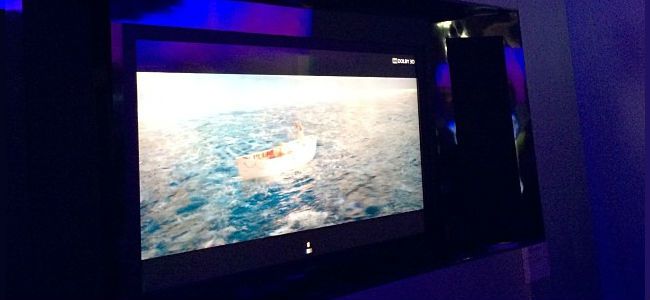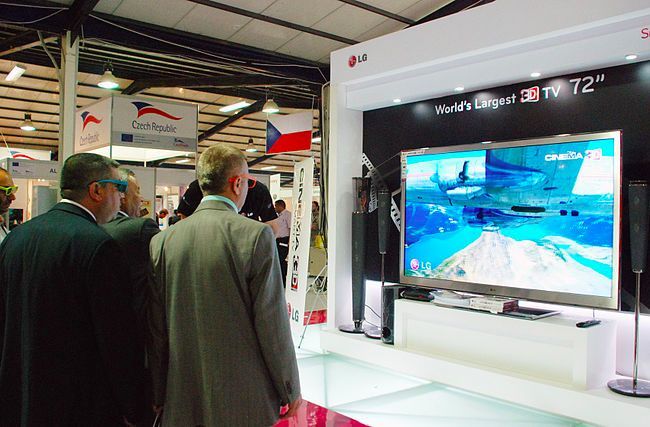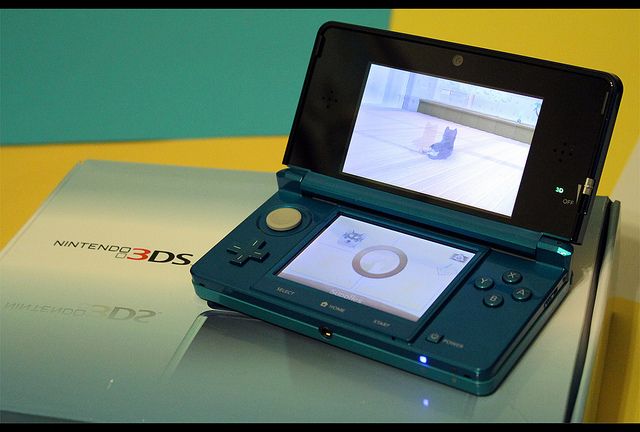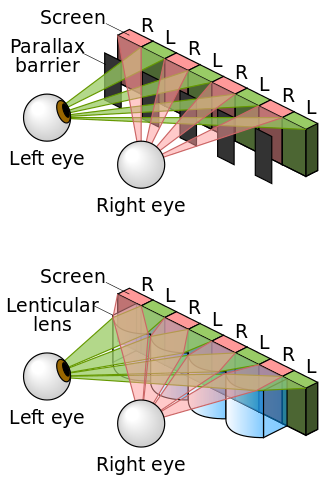Quick Links
3D TVs are gone, right? Wrong. At CES 2015, some TV manufacturers were pinning their hopes for the future of 3D TV on so-called "glasses-free" or "glassless" 3D TV technology.
The big push for consumer 3D TVs is mostly over, and most manufacturers are pushing other technologies like 4K, quantum dot, and even questionable curved displays. But 3D TV could yet make a comeback -- maybe.
Glasses vs. Glassless 3D
If you've ever seen a 3D movie like Avatar or Gravity in theaters, you understand what we mean by "glasses." These are the same type of glasses you'd need at home to enjoy a typical 3D TV in your living room or entertainment center.
Generally, two different images are displayed by the TV you're looking at. One image is polarized vertically and the other horizontally. The lenses of the glasses are designed so a different images passes through each eye, which creates the illusion of 3D. After all, the depth perception we experience in real life results from each eye seeing what's in front of us from a different perspective. That's also why it just looks wrong if you take off the 3D glasses and look at that "3D screen" directly. (Yes, we're skimming over the technical details in this article -- read our look at how 3D TV technology works for more in-depth details.)
Typical consumer 3D TVs -- you know, the ones manufacturers were selling to us as "the next big thing" before they cratered in the market and were forgotten -- required these glasses. So, when watching a 3D movie or TV show, you'd have to put the glasses on. When watching it with other people, you'd need a pair of glasses for each person. Curved TVs are also problematic when you have multiple people trying to watch the same screen.
It's Like a Nintendo 3DS, But BIgger
At CES 2015, the handful of 3D TVs on display didn't require any special glasses. You just walked by them and they appeared to be in 3D.
Before we bother explaining how this works, we can just ask: Have you ever seen or used a Nintendo 3DS? Yup, the "glassless" 3D screens being shown off work in basically the same way as Nintendo's handheld gaming console. Imagine taking the Nintendo 3DS's 3D screen technology and sticking it in a big TV, and you have a pretty good idea of what glasses-free 3D TVs are like.
As with the Nintendo 3DS itself, this has some problems. There's a specific "sweet spot" you need to be sitting in to have that 3D effect look right. With a small screen like the Nintendo 3DS you hold in your hand, you can always move the console a bit to get back to that sweet spotWith a large TV, you need to be sitting just so -- and good luck if you have any other people watching that 3D screen with you! Modern glassless 3D TVs are trying to alleviate this, but there's still a "sweet spot" problem -- there are just several other sweet spots you can sit in. You need to ensure your head is in one of the correct spots to see the 3D TV properly.
There's a bigger problem. In our experience, the 3D just doesn't look that good. People have reported for years that typical glass-requiring 3D experiences give them headaches and tire their eyes, but we had an even worse experience with the glass-free 3D TVs at CES 2015. One of us got dizzy after looking at one and had to sit and close his eyes for a while after staring at it. I didn't stare at it too long -- mostly because it didn't look all that good. Maybe I didn't take enough time to find one of the sweet spots in the crowd or perhaps the demo the TV manufacturer was running just wasn't that great. This is the same sort of experience that's been reported time and time again, of course. Even the 3D on the Nintendo 3DS has middling reviews and is often disabled by people who play games on it.
But How Does Glasses-Free 3D Work?
Technically, this sort of technique is called "autostereoscopy" -- a way of displaying 3D images that doesn't require special glasses or similar headgear.
Glassless 3D displays have a "paralax barrier" that directs different light into each of your eyes when you enable the 3D feature. With the 3D feature disabled, the barrier is disabled so the same light reaches both of your eyes, resulting in the 2D look. With 3D enabled, bits of the light are blocked from reaching either eye. Each eye sees a different image, creating the 3D look and the illusion of depth in your brain.
This is also why those glassless 3D TVs and similar screens have such narrow viewing angles. If you've ever used a Nintendo 3DS, you'll know you have to look at it from exactly a very specific angle to make sure the light reaches either of your eyes as it was designed to. The effect won't work properly otherwise.
You can learn a lot more about 3D display technologies with some quick web searches. But, if you're looking at glassless 3D TVs, just know that they work like a big Nintendo 3DS. If you love that effect, you might love these TVs! But, to be honest, most people we know -- including some Nintendo fans -- aren't big fans of the 3D effect.
So no, glassless 3D solutions probably won't lead to an explosion of 3D TV and movies. At most, they could potentially become a bonus feature that manufacturers tack on to every single TV -- sort of like how every TV is now a smart TV, even though you don't want those smart features. But the real problem would remain: How do you get 3D content for those 3D TVs? You can only rewatch Avatar and Gravity so many times. To really work well in 3D, a movie or TV show needs to be shot in 3D and designed for it rather than have it tacked on afterward.
Image Credit: Mike Lee on Flickr, Wikimedia Commons, Minh Hoang on Flickr




